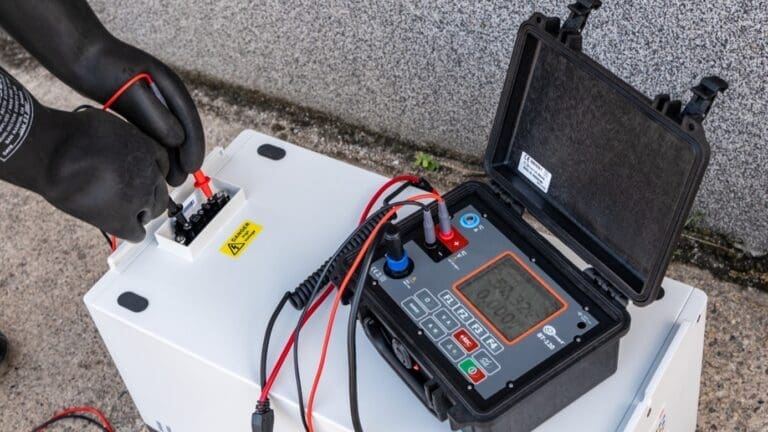
With the push for electrification becoming a cornerstone of progress, batteries are key to facilitating the transition to the use of sustainable energy sources. Adoption of electric vehicles, integration of renewable energy technology, and increasing deployment of energy storage systems all underscore the pivotal role of batteries in the low carbon world and the critical need for reliable and efficient energy storage.
A key tool in maintaining this reliability and efficiency is effective monitoring of battery condition. Battery testers provide valuable insight into battery health and performance, enabling proactive maintenance and helping to prevent unexpected and costly failures as well as ensuring seamless system operation.
Battery testers measure various parameters to assess the state of a battery, including AC/DC voltage, current, and impedance. By conducting regular tests, operators can identify issues such as capacity degradation, internal resistance changes and other factors that could lead to failures. A proactive approach allows for timely interventions, such as repairing or replacing deteriorating batteries, before overall system performance is compromised.
Alternating and direct current
Measuring current is crucial to assess the battery’s ability to deliver power and identify any problems with current flow. To keep battery cells in a good condition, it is essential to maintain the required charging current and voltage parameters in accordance with their technical specifications.
Direct and alternating voltage
Another essential function of a tester is the measurement of both direct and alternating voltage. This is important for monitoring voltage stability and matching battery voltage to the requirements of powered devices. A suitable tester will evaluate whether battery voltage is stable and in line with the requirements of the device it powers.
Internal impedance
Measuring the internal impedance allows the current condition and performance of the battery to be evaluated. It is an important indicator because it reflects three main components: resistance, reactance and battery efficiency. A battery ages as it goes through repeated charging and discharging cycles that can, over time, change the internal impedance or increase the internal resistance as the battery materials degrade.
The battery may also be subject to mechanical impacts caused by events such as vibrations, impacts or bumps that can damage the battery’s internal structures and ultimately affect its impedance. This type of damage can lead to an increase in internal resistance and a change in the efficiency characteristics of the battery.
Frequent operation of the battery under high load, either as a result of heavy discharge or intensive charging, also raises the internal resistance of the battery. This may result in an increase in the pulsed voltage and a decrease in the stability of the battery’s operation.
Measuring and evaluating the internal impedance value of the battery will help you accurately assess its condition. If internal impedance indicates potential problems, appropriate corrective measures can be taken or the battery or the cell can be replaced with a new one, preventing possible future problems and failures.
Pulsed voltage
Pulsed voltage is another important parameter monitored during battery testing that can provide valuable information about the condition of the battery and may indicate abnormalities.
One major problem pulsed voltage can indicate is damaged cells which can result in unstable battery operation and have a negative effect on performance. Pulsed voltage measurements enable rapid detection of such abnormalities so that corrective actions can be taken before the damage develops and affects the durability of the battery.
Unstable voltage may also indicate incorrect battery charging. This results in excessive use of the battery, which may shorten its durability and reduce capacity.
It’s worth noting that proper battery charging is crucial to maintaining optimal battery performance, so accurate monitoring of pulsed voltage is extremely important, giving full control over the condition of the batteries, which translates into longer lifespan and trouble-free operation.
The use of a battery tester such as the Sonel BT-120 with its function of measuring pulsed voltage up to 5V enables any abnormalities to be identified and tracked so that appropriate steps can be taken to repair and optimise the battery.
Pulsed voltage is an especially important factor when monitoring batteries in emergency power systems, where reliability and readiness for instant commencement of work is crucial. Regular monitoring with the battery tester facilitates maintenance of the emergency power systems in standby mode, minimising the risk of downtime.
Summary
An appropriate battery tester such as the Sonel BT-120, that enables AC/DC current and voltage, internal impedance and pulsed voltage measurement is an irreplaceable tool for operators that expect their own power sources to be reliable.
As the world continues its push for greater electrification, the reliability and efficiency of batteries become critical success factors and the role of battery testers cannot be overstated. By investing in proactive testing and maintenance strategies, we can avoid costly failures and ensure the longevity of these critical energy storage devices.
